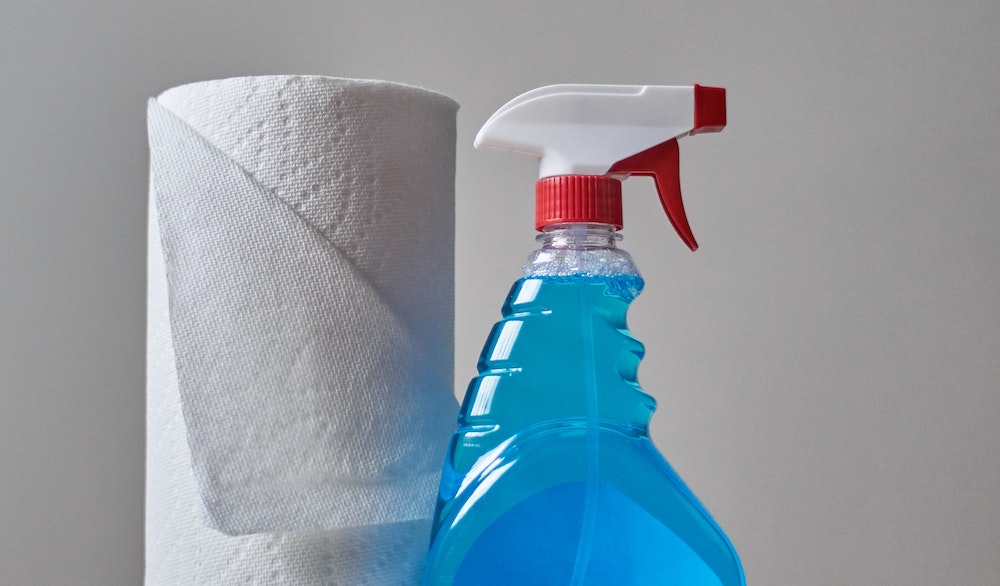[Updated February 20210]
Selling a house–whether it’s your primary residence or an investment property—is a big job. In either case, you invest a lot of time and money in getting the property ready to put on the market, and you need all of that hard work reflected in the appraisal value.
If you’re involved in real estate investing, or if you’ve been doing a little research before selling your home, you’ve probably heard horror stories about appraisal values coming in lower than the seller hoped for. What then?
The best way to get top appraisal value for a property, of course, is to do the work necessary to elevate home. Still, it can help to know how to prepare for a home appraisal.
The top three considerations to help get the highest appraisal on your home are:
- Clean up the yard. They say you never get a second chance to make a first impression, and it’s true.
- Obey the $500 rule. Spending $500 on some minor repairs could improve your appraisal value by thousands.
- Make a list of upgrades. Appraisers are used to seeing these, and they can ensure that none of your work is overlooked.
Keep reading for more on these and a complete list of simple strategies to help you prepare for an appraisal.
What is a home appraisal?
A home, or real estate, appraisal is a professional, unbiased report on the market value of a property.
Traditional mortgage lenders require a property appraisal before approving a loan in order to protect their investment. If a buyer, for example, takes out a mortgage to buy a home at a price higher than its actual market value, and then defaults on the loan, the lender will have a hard time selling the property over market value to get their investment back.
1. Clean up the yard.
An appraiser won’t be fooled into over-valuing a home based on a nice yard, but good curb appeal can start the appraisal on the right foot. Perhaps more importantly, the reverse is also true: a messy yard instantly communicates that the property has not been maintained, and the rest of the appraisal will have to work hard to prove that assumption incorrect.
Some simple improvements and considerations might include:
- Weed flower beds
- Add fresh mulch to flower beds
- Trim up bushes
- Fill up any bird feeders
- Add one or two fresh, potted plants to the front porch
- Power-wash decks, driveways, and sidewalks (and siding)
It can also be helpful to water the yard and gardens more than normal for a couple weeks before the appraisal. A little extra water can make everything look lush and fresh.

2. Obey the $500 rule.
There are two sides to the $500 rule.
The first is to take care of those minor repairs that you may have just grown used to dealing with if you’re selling a primary residence. Investing $500 in leaky faucets, broken light switches, etc., can dramatically improve the appraisal value of the home.
The second part of the rule, and the reason that those small repairs can have such a big impact, is that appraisers tend to work in $500 increments. That means that small issues will drop the appraisal value not by the cost of those repairs, but by an even $500—every time.
3. Make a list of upgrades and repairs.
If you’re new to selling properties, this can seem a little forward, but appraisers are used to seeing these lists. The list creates several benefits:
- It tells the appraiser that you’re prepared for their visit.
- It highlights the work you’ve done, so nothing gets overlooked.
- It helps the appraiser understand, more generally, how much you have invested in the property.
If you’re selling a flipped house, the list might be fairly long, so start with the biggest investments at the top. List each item with the year the repair or upgrade was made. Some improvements may include items like:
- Loose floorboard
- Rain gutters
- Leaky roof
- Fixed doorbell
- Dripping pipes or faucets
- Bathroom caulk

4. Research your neighborhood.
There are a few ways that considering your neighborhood can help you prepare for an appraisal.
First, you may be able to learn what issues your neighbors had to work through, or what unexpected considerations became a factor in their appraisals. Public record may reveal issues that came up during appraisals in your neighborhood, but you can also ask if you’re on good terms with your neighbors.
Second, investigating recent housing values in your neighborhood will give you a good idea of what to expect for your own.
Finally, creating a second list of neighborhood features and amenities can be helpful for the appraiser as well. Location (location, location) is a crucial component of any property value. Highlight unique features such as:
- A new shopping center in the area
- Local schools that won an award or have good ratings in general
- Parks, community centers, or trails nearby
- Proximity to hospitals or health care facilities
- Newly repaved roads
Make sure you talk about all great amenities in the neighborhood that could add value to your property.
5. Host the appraiser.
Don’t go overboard and offer refreshments, but make the appraiser’s visit pleasant and easy. Appraisers are busy, and usually make multiple calls in a single day.
Some considerations may include:
- Set the internal temperature appropriately. Make sure the home is cool enough in the summer and warm enough in winter.
- Make sure every space is accessible by pushing in chairs, removing clutter, clearing hallways, unlocking doors, removing baby gates, etc.
- Crate pets or arrange for them to be with a friend during the appraisal. (Most appraisers have their own horror stories about dogs. Don’t let that be your house!)
- Go easy on scents. If you want to use a fragrance or light a candle, remember that everyone has different preferences—and allergies. Use sprays and blow out candles 30 to 60 minutes before the appraiser arrives, to keep scents subtle.

6. Ensure that safety equipment is installed and working.
It’s easy to forget about safety equipment, especially if the property is your primary residence, but appraisers will definitely check. Make sure:
- Smoke and carbon monoxide detectors are installed and batteries are new.
- Home security systems are on and running properly.
- Fire extinguishers are not expired.
7. Clean. Again.
A well-kept property reflects a well-maintained house. Cleaning up before the appraisal might sound like a trivial task, but it creates a strong impression on the appraiser. They pay close attention to these details.
Walk through the house with fresh eyes, or ask a very honest friend to come over and help you. Some simple steps might include:
- Removing as much surface clutter as possible.
- Wiping down walls.
- Shampooing carpets.
- Cleaning floors to a shine.
- Bleaching shower grout.
- Making sure windows are clean and streak-free.
- Pruning up brown leaves on houseplants.
It might be one day of really intense work, but it can have a huge impact on your appraisal value.

8. Look for the small things.
It’s easy to overlook small repairs or upgrades—because you’ve gone blind to them in a primary residence, or because you’ve spent so much energy on big upgrades on a flip. But too many of those “little things” can have a cumulative, negative effect on your appraisal value.
In addition to the $500 rule, too many minor issues date a house (even if you just flipped it). If the perceived age of a house is higher, it will get grouped into a general category of “older” houses and lose value.
9. Have an appraisal done sooner rather than later.
Most appraisals happen when the buyer’s lender orders an appraisal as part of the mortgage approval process. If issues come up during that appraisal, though, the sale may just fall through entirely.
Ordering your own appraisal when you feel like the property is ready for sale can give you a head start on resolving any issues. A traditional mortgage lender that gets involved in a potential sale later on will still order their own appraisal, so the value you get from an early appraisal isn’t set in stone. But it can be a good test run so you can resolve any issues and know what to expect during a buyer’s appraisal later.
10. Invite your real estate agent or Realtor.
A good real estate agent will attend the appraisal, especially if you are unavailable to attend yourself, to represent the property. Their expertise puts them in an ideal position to discuss comparable flip projects or home sales in the same area, as well as local amenities that increase the value of the location.
If you are unavailable, the real estate agent can also present your list of upgrades and repairs.
11. Don’t crowd the appraiser.
This tip may sound bizarre, but not all appraisers like having you around all the time. When you follow your appraiser too much, they often think you want to create a distraction or that there is an issue in the home that you do not want them to notice.
You have to be available to calm concerns and point out highlights, but give them space to do their job.
How to Prepare for an Appraisal
You’ve already done the work to make major repairs and upgrades. You’ve prioritized high-ROI updates and fixes, and done everything you can to really improve the value of the home.
But you still need to make sure you’re communicating the value of the home well, and that happens at the appraisal.
Appraisers are professionals, and they’ve seen a lot of gimmicks, so you’re not going to fool them into an unreasonably high appraisal value. But adequately preparing for your home appraisal can ensure that you’re communicating the home’s real worth, and get the best value possible.
Start by walking through the house with fresh eyes and making a list of small projects to tackle—small yard work jobs, minor repairs, little improvements, etc.
And if you’re in Texas, let us know when you’re ready to invest in your next fix and flip property! Loan Ranger Capital is a leading hard money lender from Austin, to Dallas, to Houston, and we’re known for our outstanding customer service. We’d love to talk about your next investment project.
